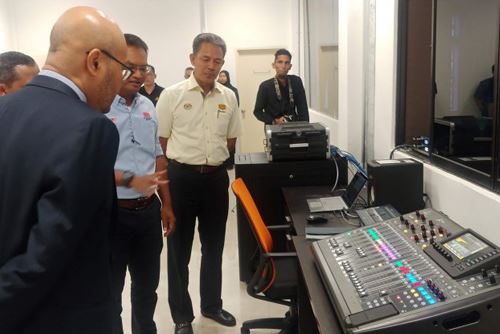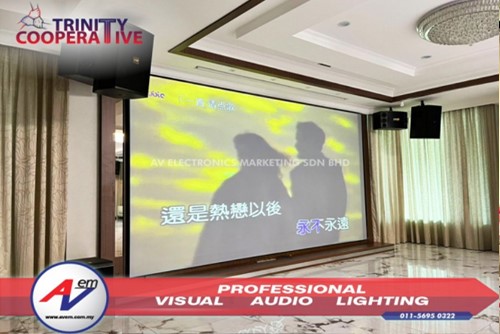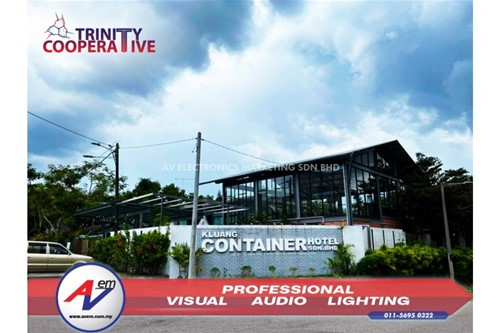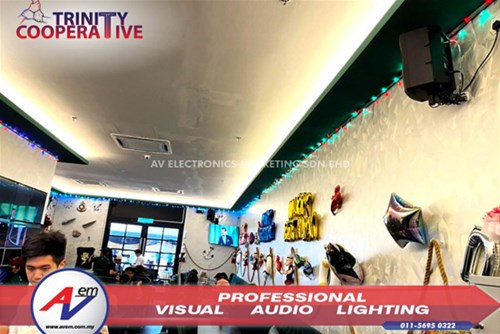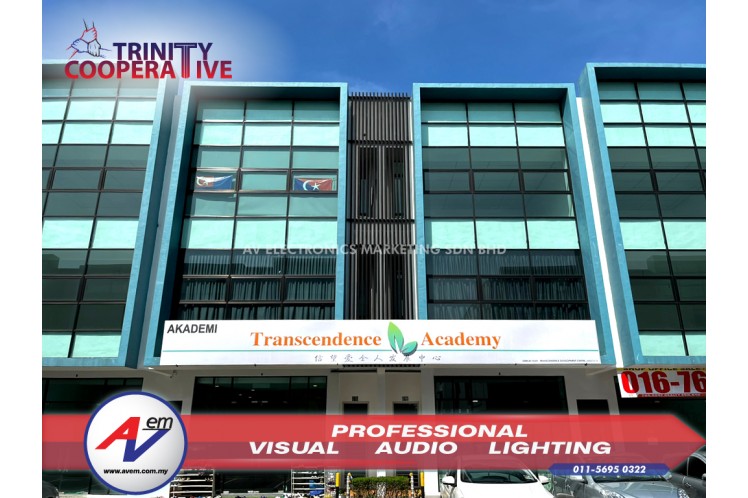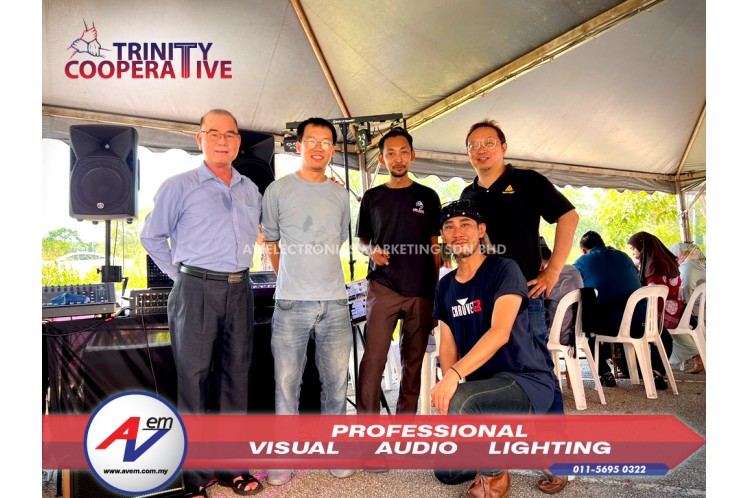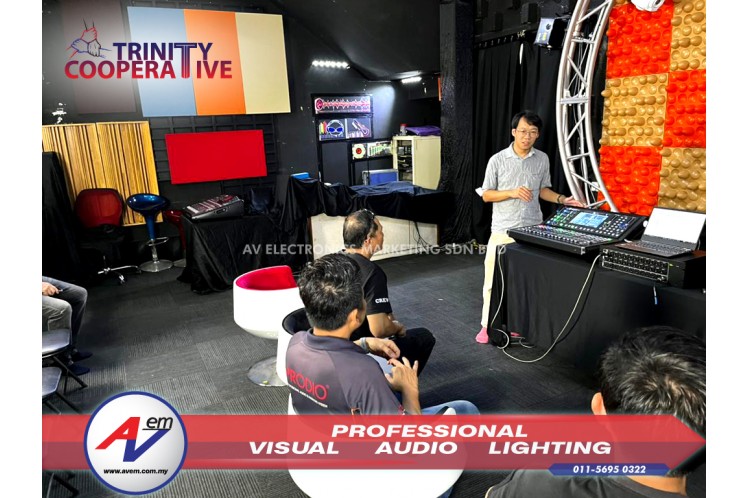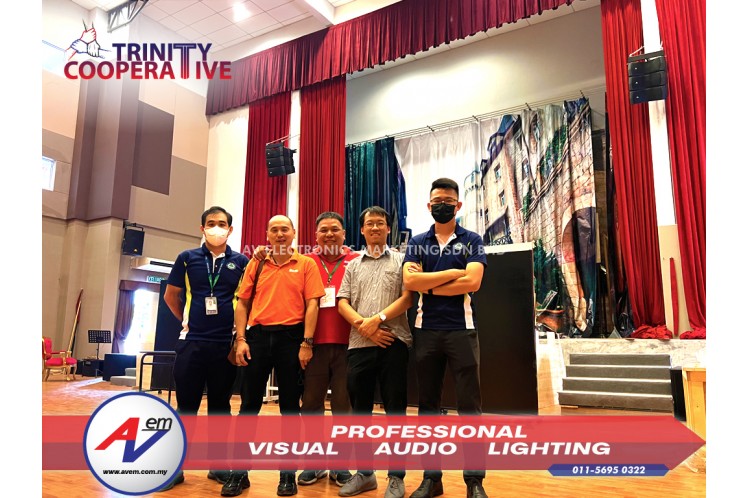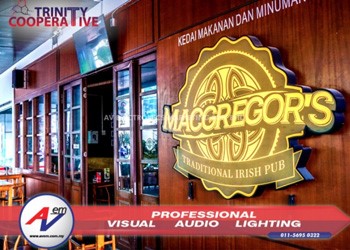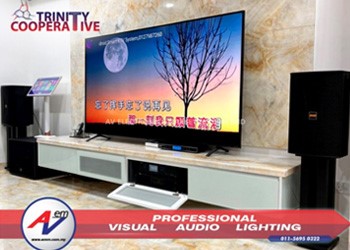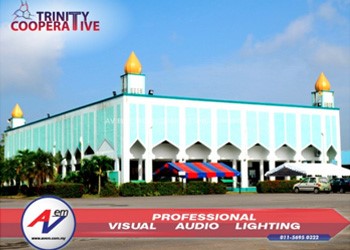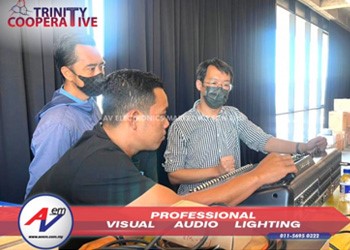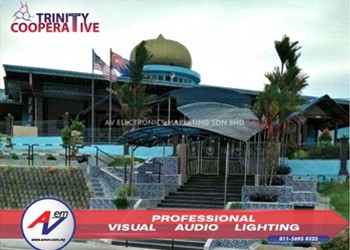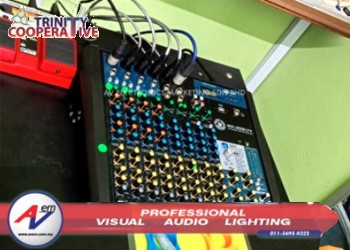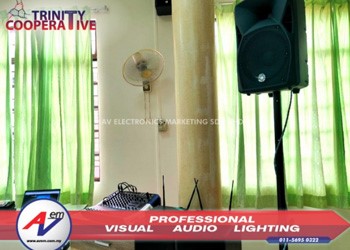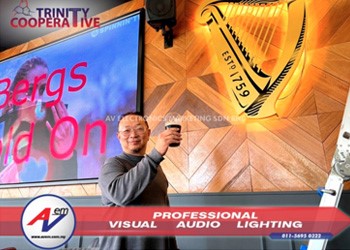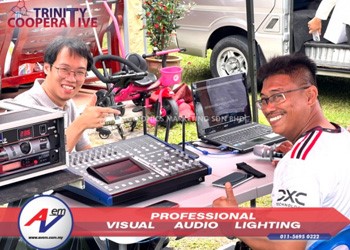AVEM Classroom 09 - Acoustics
Acoustics

Acoustics is a branch of science that focuses on the qualitites and characteristics of sound waves. As you might expect, the stufy of acoustics covers many topics. It is more than simply hanging some fabrics on a wall to solve an "acoustical problem."
The study of acoustics includes the following:
- How sound is generated
- How sound energy moves through air and other media (such as concrete, steel, and water)
- How dimensions and shapes of surfaces affect the way sound behaves in an environment
- How sound energy can be prevented from leaving or entering a space through partitions or vibrations
- What happens to sound energy when it encounters a boundary (a change of materials)
- Your perception of a sound as processed by your ear and brain
Sound energy moves out and away from a source in all directions. Unless the sound is generated in a completely free space, the energy will, at some point, encounter a boundary or surface. If you're outdoors, the boundaries may be only the ground or nearby buildings. But indoors, there can be many boundaries and surfaces. Along with the walls, ceilings, and floors, furniture and people also affect what happens to sound energy in an environment.
So, what happens to the energy produced by a sound-reinforcement system or other source of generated sound? The law of conservation of energy tells us that total energy neither increases nor decreases in any process. Energy can be transformed from one form to another— and transferred from one body to another— but the total amount of energy remains constant. This means that when the radiating sound energy encounters a surface or room boundary, some combination of three things will occur.
- The sound is reflected. As the sound energy moves away from the source, some of it will be reflected back off various surfaces. The reflections can be specular (direct) or diffused (scattered). Either way, the total amount of energy remains in the space.
- The sound is absorbed, either in the air (not much of an issue except in extremely large spaces) or by the materials in the space (sound energy is converted into-level heat).
- The sound is transmitted. In other words, the energy actually pases from one space to another through a partition or other barrier.
Reflected Sound Energy
There are two types of sound reflections:
- Direct reflection This is also known as a specular or hard reflection. This type of reflection is more-like: most of the energy is reflected back, coherently, in a single direction from each point on the surface. As with light, the direction of the angle of reflected sound energy is determined by the incoming angle, as the angle of incidence is equal to the angle of reflection.
- Diffuse reflection This type of reflection scaters the energy back in many directions. This is similar to the properties of a diffusion-type projection screen.
Whether the energy is reflected in a specular or diffuse fashion depends on how smooth a surface is, relative to the wavelength. Because we're dealing with a range of wavelengths, the transition between specular and diffuse relection is not immediate, and neither is how much energy is reflected, absorbed, or transmitted. Some wavelengths will undergo specular reflection, some will undergo diffuse reflection, while others will act somewhere in between. Their behaviour is determined by the size, the nature of the material, and the mass of the boundaries in a space.
In every situation involving boundaries or surfaces, you will always have some direct sound (sound that arrives at the listener position in a direct, straight line) and some reflected sound (sound that takes an indirect path from the source to the listener).
Reflected energy arrives later in time direct sound because the shortest path between two points in a straight (direct) line. Taking other paths requires traveling a longer distance and requires more time. Thus, reflected sound will always arrive later than direct sound,. Reflections can be defined as early or late. A late reflection is called an echo.
Reverbation
When a venue has many hard, reflective surfaces, the energy level of each sound reflection can remain quite high. As energy reflects off more surfaces around a room, the listener begins to receive reflected energy from all directions. When the energy level remains high and the reflections become dense in relation to one another, it is called reverbations. Reverbation simply describes numerous, persistent reflections.
Absorption
The materials used in the construction and finish of a venue (walls, ceiling, floor, furniture, curtains, windows, seating, etc,), as well as people themselves, play a part in the amount of sound energy absorbed.
One type of absorber you may be familiar with is the porous absorber panel. As the displaced air molecules pass through a porous absorber, the friction between the molecules and the materials of the absorber slow down the molecules. Typical porous absorbers include carpets, acoustic tiles, acoustical foams, curtains, upholstered furniture, and people (clothing). Figure 4-5 shows an example of using acoustic tiles.
Though acoustically absorptive material may be applied in a room, effective absorption will occur only over a limited frequency range. Energy above or below the effective frequency band of the absorption will be either reflected or transmitted.
Transmission
Sound energy that is not reflected or absorbed will be transmitted into another space through partitions (walls, windows, floors, and ceilings) or as structure-borne vibrations. The ability of a partition to transmit or reflect sound energy is limited by factors such as the weight of the partition (mass), stiffness of the partition material, air gaps, design of the partition, and internal structure of the parition.
Ambient Noise
Noise is generally defined as anything other than desired signal. While an electronic sound system inherently generates noise through its electronic components, rooms are also characterized by noise.
Anything heard in a room other than the desired signal from a sound-reinforcement system is considered background or ambient noise. This can include noise from equipment fans; office equipments; telephones ringing; heating, ventilation, and air conditioning (HVAC) systems; and people in the room. Noise can intrude from outside the room as well, through partitions or windows. Outside sources may include vehicular traffic, weather sounds, adjoining corridors, or-structure-borne vibrations.
Ideally, because excessive noise levels interfere with the message being communicated, an acoustician, AV consultant, or designer should specify background noise level limits appropriate ot the type of room and its purpose. In practice, the criteria and limits for background noise levels for a gymnasium will be much different from those for a conference room. With such limits determined, parts of the project— the HVAC system, partitions, and necessary acoustical treatments, for example—may be desinged and applied so that the background noise level criteria are not exceeded.
- active loudspeaker
- active speaker
- active subwoofer
- alto
- analog crossover
- analog equalizer
- analog mixer
- audiocenter
- b205d
- behringer
- bmb
- bosch
- box speaker
- church
- column speaker system
- convention center
- csp-610
- csp612
- css1720
- csw-115
- da2250
- da2500
- dad-500
- dad950
- dar-350h
- dcx2496le
- digital loudspeaker management
- digital mixer
- digital snak2
- digital snake
- dl16
- dlm408plus
- dm220
- dm24.8
- dm-24.8
- dm48.20
- dpe-2.10
- dpm4.13mk2
- dsp5211
- dsppa
- dsspa
- dvs-4t
- ea5118
- education
- emix
- emma-120b
- emma-835zsmkll
- empa-8250mkii
- empa-8500
- empa-8500 mkii
- empa-8500mkll
- emws884
- emws884b
- emws-884w
- ep1500
- ep2000
- ep512
- fbq-1502
- fbq-1502hd
- fbq3102hd
- hm1461fx
- hm822fx
- ic electronics
- iq15
- iq18b
- iva
- iva audio pack
- karaoke
- kfc
- kla210
- kla210dsp
- kla210wp
- kla218
- kla218dsp
- kla28
- kla815b
- klark teknik
- km1700
- l65
- l65+l65a
- l65+l65s
- l65a
- lbb-3200/00
- lbc-3200/00
- lbc-3210/00
- line array
- live music venue
- live-8
- loudspeaker
- lt10a
- lt12p
- m18b
- m32
- m32 live
- m7.0mkii
- m-7.0mkii
- ma12
- ma15
- masjid
- microphone
- microphones
- midas
- mixer
- mixing amplifier
- mr-28u
- multipurpose hall
- mxi.1222cfx
- mxi.1422
- mxi.1422cfx
- mxi.1622cfx
- my boss club
- pa sistem untuk masjid
- pa system for auditorium
- pa system for bar
- pa system for cafe
- pa system for church
- pa system for court
- pa system for goverment
- pa system for hall
- pa system for hotel
- pa system for mosque
- pa system for multipurpose hall
- pa system for restaurant
- pa system for school
- pa system for temple
- pa system for worship
- passive loudspeaker
- passive subwoofer
- pc260
- pf-118b+wp
- pf-12+wp
- pf-15+wp
- pm827
- pm8270
- pm-8270
- power amplifier
- power mixer
- powered mixer
- pro-12.0
- pro256dx
- pro26dx
- pro7.0
- pro-9.0
- proel
- pro-ud2
- ps15r2
- qx602mp3
- rx10mk2
- rx-10mk2
- rx12mk2
- rx-12mk2
- rx15mk2
- rx-15mk2
- rx-5mk2
- s16
- s32
- sa3118
- sa312
- sa315
- shure
- smaart tuning
- stadium
- stage monitor
- sub118b
- sub-118b
- subwoofer
- t2208
- tannoy
- test test
- tfx122m-an
- th20/tu60ml
- topp pro
- tpm2.3
- tpm-2.3
- tpx-122m
- turbosound
- u2004ch4
- uum
- ux34d
- v4fx
- ve-20
- vp1220
- wd12av2
- wd15av2
- weather proof loudspeaker
- wing
- wireless microphone
- ws740
- x10
- x10a
- x12a
- x15
- x15a
- x1622usb
- x1832usb
- x32
- x32 compact
- x32 producer
- x8
- x8a
- xenyx x1204usb
- xenyx x2442usb
- xr18
